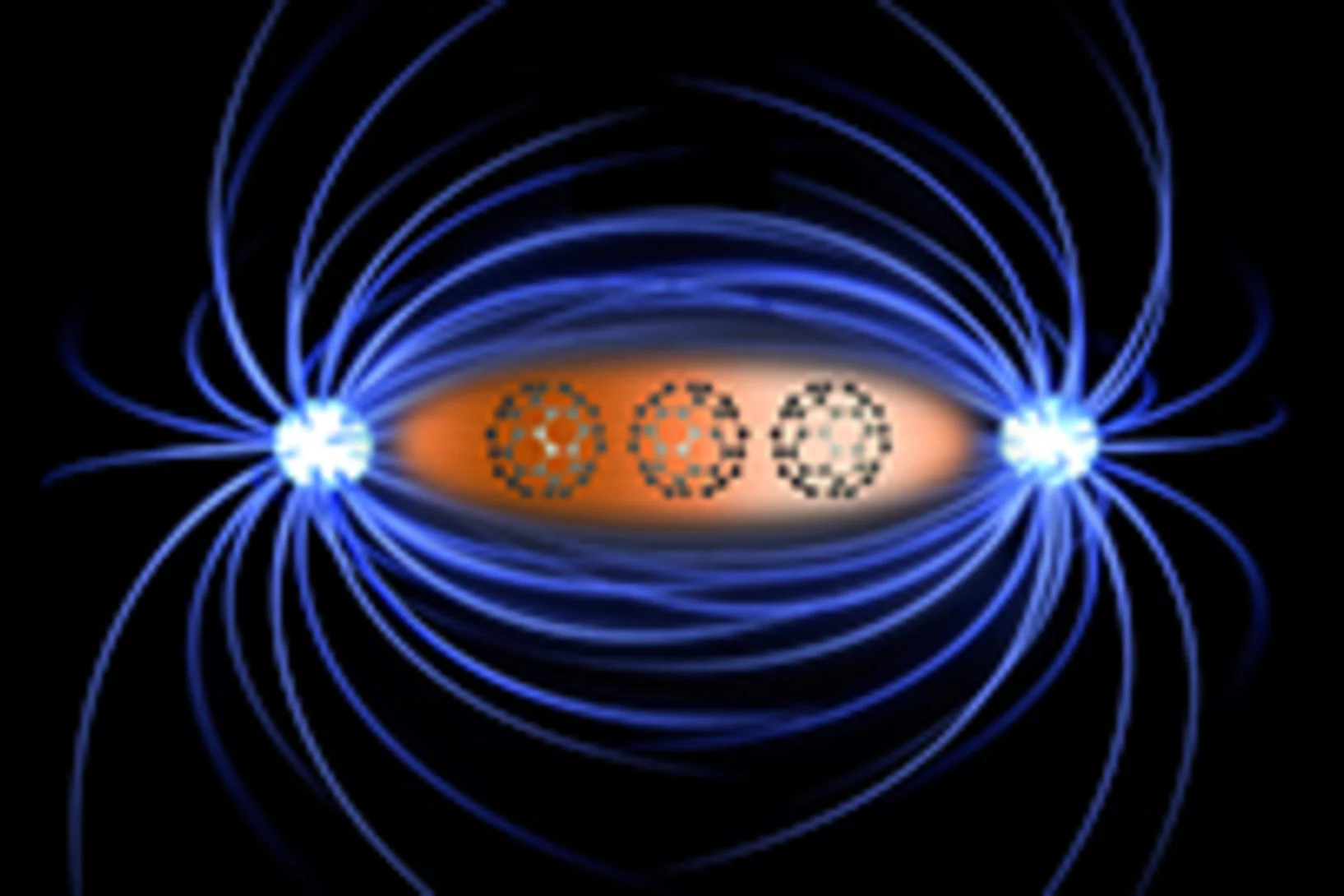Together for Science with Neutrons, Muons and X-rays
Strategic partnership between research facilities in UK and Switzerland will create new capabilities to address global challenges using neutrons, muons and X-rays.
Kagome breaks the rules at record breaking temperatures
Discovery of quantum phenomenon at accessible temperatures could be useful for quantum technologies.
Magnetism in thin layers: One electron makes the difference
An important step towards novel computer memory
SRF material research using muon spin rotation and beta-detected nuclear magnetic resonance
Muon spins precess in transverse magnetic fields and emit a positron preferentially in the spin direction at the instant of decay, enabling muon spin rotation (μSR) as a precise probe of local magnetic fields in matter. μSR has been used to characterize superconducting radio-frequency (SRF) materials since 2010. At TRIUMF, a beam of 4.2 MeV μ+ is implanted at a material-dependent depth of approximately 150 μm. A dedicated spectrometer was developed to measure the field of first vortex penetration and pinning strength in SRF materials in parallel magnetic fields of up to 300 mT. A low-energy beam available at PSI implants μ+ at variable depth in the London layer allowing for direct measurements ...
Bronze Age arrowhead is made of meteoritic iron
With the help of muons, PSI researchers were able to determine the origin of the material used for an arrowhead.
Hercules and batteries, X-rayed
With muons, PSI researchers can examine objects non-destructively. This helps in archaeology and battery development.
We start with 500 million muons
Materials for future electronics can be studied with muons. In this interview, PSI researchers Alex Amato and Thomas Prokscha explain the special characteristics of these elementary particles.
Tiny magnets mimic steam, water and ice
Researchers at the Paul Scherrer Institute (PSI) created a synthetic material out of 1 billion tiny magnets. Astonishingly, it now appears that the magnetic properties of this so-called metamaterial change with the temperature, so that it can take on different states; just like water has a gaseous, liquid and a solid state.
Magnets made of non-magnetic metals
For the first time, an international research team has demonstrated how to generate magnetism in metals that aren’t naturally magnetic, such as copper. The discovery could help develop novel magnets for a wide range of technical applications. Crucial measurements to understand this phenomenon were carried out at PSI à the only place where magnetic processes inside materials can be studied in sufficient detail.
The proton accelerator at the Paul Scherrer Institute: forty years of top-flight research
Materials research, particle physics, molecular biology, archaeology à for the last forty years, the Paul Scherrer Institute’s large-scale proton accelerator has made top-flight research possible in a number of different fields.
Experiments in millionths of a second
Muons à unstable elementary particles à provide scientists with important insights into the structure of matter. They provide information about processes in modern materials, about the properties of elementary particles and the nature of our physical world. Many muon experiments are only possible at the Paul Scherrer Institute because of the unique intense muon beams available here.
Der Unterschied zwischen dünn und sehr dünn
Materialforschung in neuer DimensionViele Materialien haben eine spezielle kristalline Struktur à ihre Atome sind übereinander in Schichten angeordnet. Ein deutsch-schweizerisches Forscherteam hat zum ersten Mal präzise beobachtet, wie die physikalischen Eigenschaften einer Substanz von der Zahl dieser Schichten abhängen. Dass sich die physikalischen Charakteristika nun auch auf diese Weise kontrollieren lassen, eröffnet neue Möglichkeiten, Stoffe zu identifizieren, aus denen die Computerchips der Zukunft gemacht sein könnten.This news release is only available in French and German.
In the future: processing and memory on a single chip
Researchers have shown that a magnetically polarised current can be manipulated by electric fields. This important discovery opens up the prospect of simultaneously processing and storing data on electrons held in the molecular structure of computer chips à combining computer memory and processing power on the same chip. This may allow for the development of new devices with high power efficiency and reduced weight.
Service to the scientific community
Neutrons, synchrotron light and muons are very useful for researchers in a variety of disciplines. Using these probes, we can determine the structure of crystals, they help us understand magnetic processes, or they can reveal the structures of biological materials. However, producing these probes is so difficult that most research groups will not have a neutron, muon or synchrotron light at their own scientific centre.
Entsteht Supraleitung doch ganz anders?
Publikation in Nature Materials. Ergebnisse vom Paul Scherrer Institut stellen gängige Theorien der Hochtemperatursupraleitung in Frage.This news release is only available in German.
Was beim Computer im Kopf vorgeht
Publikation in der Online-Ausgabe von Nature. Ein Forscherteam unter der Leitung von Alan Drew (Univ. Freiburg, Schweiz und Queen Mary College, London, England) und Elvezio Morenzoni (Paul Scherrer Institut, Villigen, Schweiz) hat als erstes im Detail die magnetischen Vorgänge in einem Lesekopf – ähnlich dem, der Daten von der Festplatte eines Computers liest – verfolgt.This news release is only available in French and German.
















